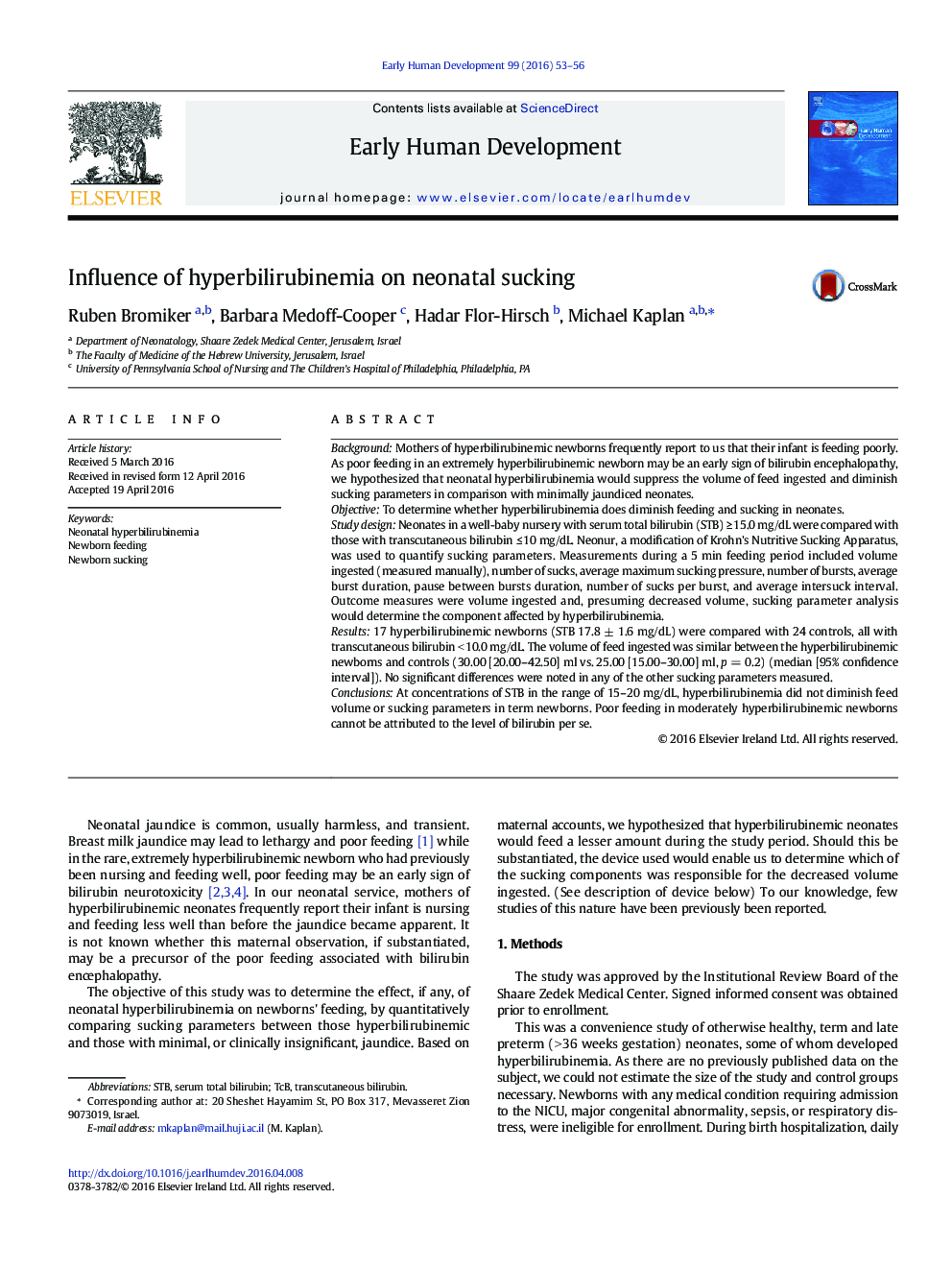| کد مقاله | کد نشریه | سال انتشار | مقاله انگلیسی | نسخه تمام متن |
|---|---|---|---|---|
| 3916421 | 1599467 | 2016 | 4 صفحه PDF | دانلود رایگان |
• We asked whether neonatal hyperbilirubinemia suppresses feeding in affected neonates.
• In a case control study, we compared feeding volumes and sucking parameters, using an advanced-model mobile nutritive sucking device, between hyperbilirubinemicneonates and controls with minimal jaundice. The volume of feed ingested over the 5 min test period was not significantly different between the 2 groups, as were the sucking parameters. Poor feeding in otherwise healthy, moderately hyperbilirubinemic term newborns cannot be attributed to the jaundice, per se.
BackgroundMothers of hyperbilirubinemic newborns frequently report to us that their infant is feeding poorly. As poor feeding in an extremely hyperbilirubinemic newborn may be an early sign of bilirubin encephalopathy, we hypothesized that neonatal hyperbilirubinemia would suppress the volume of feed ingested and diminish sucking parameters in comparison with minimally jaundiced neonates.ObjectiveTo determine whether hyperbilirubinemia does diminish feeding and sucking in neonates.Study designNeonates in a well-baby nursery with serum total bilirubin (STB) ≥ 15.0 mg/dL were compared with those with transcutaneous bilirubin ≤ 10 mg/dL. Neonur, a modification of Krohn's Nutritive Sucking Apparatus, was used to quantify sucking parameters. Measurements during a 5 min feeding period included volume ingested (measured manually), number of sucks, average maximum sucking pressure, number of bursts, average burst duration, pause between bursts duration, number of sucks per burst, and average intersuck interval. Outcome measures were volume ingested and, presuming decreased volume, sucking parameter analysis would determine the component affected by hyperbilirubinemia.Results17 hyperbilirubinemic newborns (STB 17.8 ± 1.6 mg/dL) were compared with 24 controls, all with transcutaneous bilirubin < 10.0 mg/dL. The volume of feed ingested was similar between the hyperbilirubinemic newborns and controls (30.00 [20.00–42.50] ml vs. 25.00 [15.00–30.00] ml, p = 0.2) (median [95% confidence interval]). No significant differences were noted in any of the other sucking parameters measured.ConclusionsAt concentrations of STB in the range of 15–20 mg/dL, hyperbilirubinemia did not diminish feed volume or sucking parameters in term newborns. Poor feeding in moderately hyperbilirubinemic newborns cannot be attributed to the level of bilirubin per se.
Journal: Early Human Development - Volume 99, August 2016, Pages 53–56
